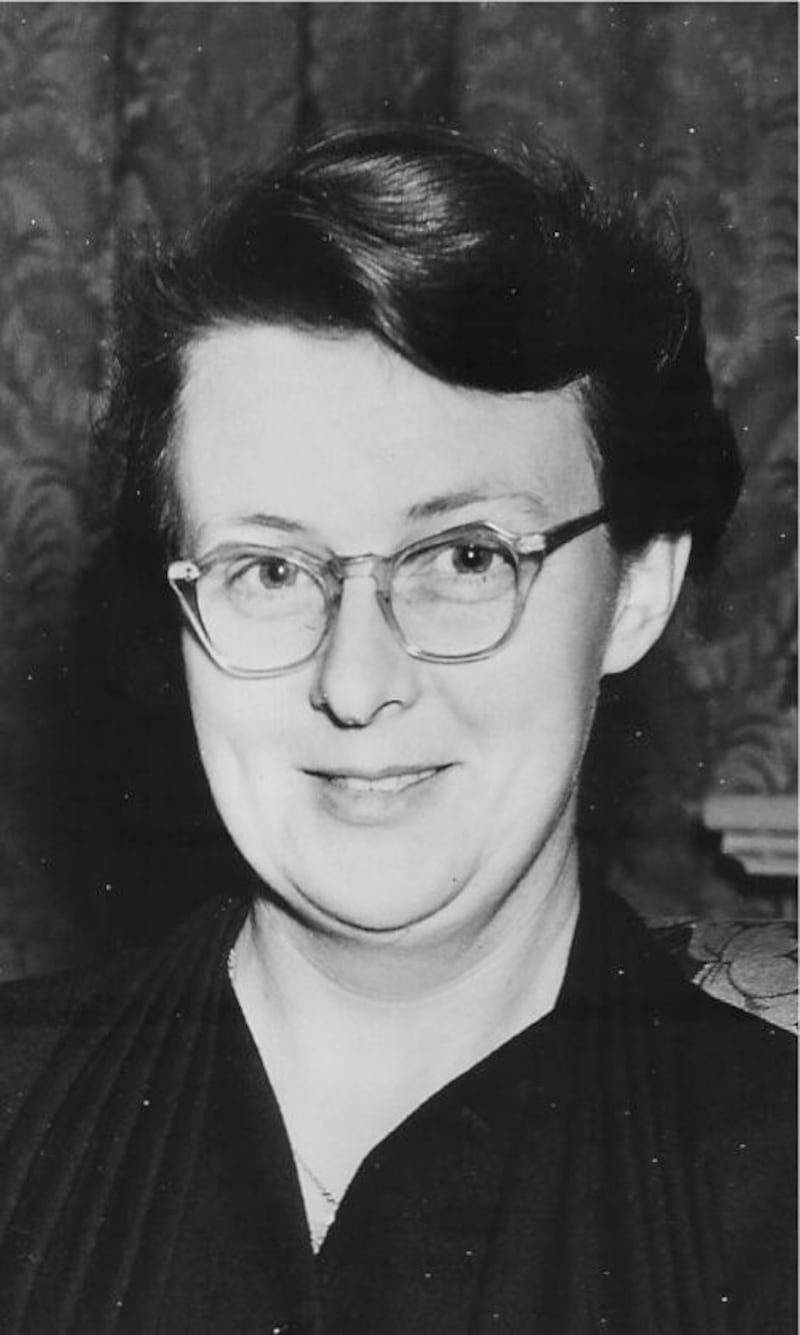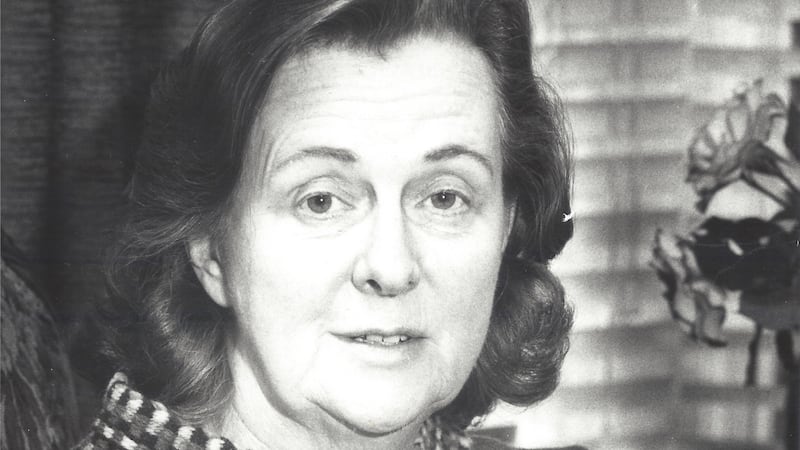Eilís Dillon, whose birth centenary is on March 7th, wrote some 50 books, about a third of which have been translated into other languages. The range of her prolific output is extraordinary, featuring literary and historical novels, detective stories, books for children and teenagers, stage and radio plays and poems, as well as autobiographical essays and translations.
Most of her books were for children and teenagers. In her obituary in this newspaper in July 1994, Declan Kiberd wrote: “If today there are whole sections in our bookshops devoted to Irish children’s literature, that is due in great part to her pioneering contribution, which helped raise the prestige of this once-neglected area of literary endeavour.”
Elaina Ryan, chief executive of Children’s Books Ireland, said that it “owes a great deal” to her, “not just as a writer of significance for children and young people but for her role in establishing and chairing the Irish Children’s Book Trust, from which our organisation grew. She believed in the need for Irish children’s literature to reflect the reality of her readers’ experiences and was an advocate for the native writing and publishing community which is now thriving.” At the annual KPMG CBI Awards, the Eilís Dillon Award is presented to the creator of the best first children’s book.
“For everyone who imagines young-adult fiction was an invention of the Americans (and sparkly vampires) in the 21st century, Eilís Dillons’s novels – from the 1950s to the 1990s – serve as reminder that this is a field serious writers have been tackling for decades with innovation, skill and empathy,” said Claire Hennessy, successful young-adult fiction writer and teacher of creative writing.

Dillon’s daughter Eiléan Ní Chuilleanáin, academic, poet and former Ireland Professor of Poetry, said that although many of her mother’s books earned her critical recognition in her lifetime, since her death it has been difficult to place her work in the canon of Irish writing. However, she sees her reputation as a children’s writer as “secure” and quoted Nancy Watson as describing her as a “foundational” writer in Irish children’s literature.
Ní Chuilleanáin also quoted Suzanne Rahn as writing: “The long-term value of Dillon’s work, however, lies not in any topical implications, interesting though these are, but in the fascinating particularity of her Irish setting, coupled with the universality of her insights into human nature and society. For all young people setting out on their personal journeys into the unknown, Dillon is one of the genuinely helpful actors. Repeatedly, within her microcosm, she shows young readers what lies ahead – doubtful strangers, unforeseen contingencies, conflicting claims, moral ambiguities. Yet hers is a hopeful view.”
Three categories
Her works for young people fall broadly into three main categories: books for young children, shorter books for children aged eight to 12 and longer books for teenagers. In Twentieth Century Children’s Writers (1978), she explained: “I began to write at a very early age and so unselfconsciously that it was almost inevitable that I should begin by writing children’s books. I work on them exactly as I do on adult fiction, concentrating on character and background rather than on plot, but usually find that a strong story soon develops. Almost all my books for children have a strong Irish background and have their source in my knowledge of the Irish language.”
She wrote seven books for young children, the first three in Irish. They were well received and described variously by reviewers as “charming”, “light-hearted”, “delightful” and “amusing”. Some 14 books for older children followed, many of them featuring animals and environmental issues long before such concerns became mainstream. Reviewers called them “enthralling”, “unusual”, “evocative” and “gripping” and particularly praised her for avoiding “the common sin of condescension” that often blighted writing for children.
Many of her 15 books for adolescent readers are set in the west of Ireland and wild Atlantic coast and are classic adventures featuring brave young heroes, hardy old men and strong, capable, resourceful women. Particularly successful in this category were The Lost Island (1952), which tells of a son’s quest for his father, who had set out the find the mysterious island but had never returned; The House on the Shore (1955), where a 16-year-old boy is sent to live with his miserly uncle and is pitched into solving intrigues involving his uncle, two foreign sailors and attempts to rob the villagers (the book was favourably compared to RL Stevenson’s Kidnapped); and the Island of Horses (1956), a story of two adventurous boys who go to the eponymous island and find a beautiful tame black colt, which they bring back with them and then face many battles to keep it safe (a Guardian reviewer praised the “hard, spare poetry” of the narration).
She felt a strong sense of civic responsibility and wanted to influence future generations through her work
Through her adventurous stories for children and teenagers, Dillon chose to present escapes to idyllic places (often islands) where the young protagonists, freed from harsh and limiting external realities, could explore and overcome the challenges and difficulties of their surroundings. Eiléan Ní Chuilleanáin said that despite the insular settings of many of her mother’s stories, “the Ireland that she writes about is a place wide open to Europe” where the children are on “the first stage of a journey which may end anywhere”.
While Dillon’s enormous contribution to the creation of children’s literature in Ireland has been appreciated and acknowledged, much less attention has been paid to her writing for adults. Through her family background – her father, Prof Thomas Dillon, had been active in the independence struggle; and her mother, Geraldine Plunkett, was a sister of the executed 1916 leader Joseph – she was keenly aware of her family inheritance of patriotism and public duty. She felt a strong sense of civic responsibility and wanted to influence future generations through her work.
Galway origins
Dillon was born and reared in Galway, and her close relationship with the remembered landscape of the west (of which the Irish language was also a part) as representing a sacred place became a defining characteristic of much of her fiction, the literary critic and writer Anne Marie Herron has pointed out. For her it stood for the quintessential Ireland, an idealised place where previous generations struggled to carve out a precarious but meaningful existence. We should also recall the pervasiveness of censorship in Ireland at the time she began to write, which may well be why she began writing for children. It may also be the case, as some critics have contended, that her reliance on memory and tendency to represent an idealised past could have been a repressive influence on her choice of genres and subject matter but that should not in any way detract from the impressive extent of her achievement.
Her first venture into adult fiction comprised three detective novels: Death at Crane’s Court (1953), Sent to His Account (1954) and Death in the Quadrangle (1956). Ní Chuilleanáin acknowledges that they were “very much of their time, not only in their subject matter but also in the sardonic style, the light touch, the slightly satirical stance”; in other words, they were of the easy-going, puzzle-solving type rather than of the hard-hitting, noir variety.

Dillon followed these with two of what might be called “literary” novels: The Head of the Family (1960) and Bold John Henebry (1965). Both are concerned with patriarchal heads of families. The first explores tensions and jealousies associated with literary success in a witty and ironic way, while the second, using a straightforward descriptive approach, is a family chronicle tracing the eponymous character’s journey from rural poverty and radicalism to settled prosperity, and the personal costs and sacrifices involved.
Her six historic novels, The Bitter Glass (1958), Across the Bitter Sea (1973), Blood Relations (1978), Wild Geese (1981), Citizen Burke (1984) and The Interloper (1987), are ambitious in the span of Irish history that they cover. She acknowledged a serious purpose in writing the novels (they “do indeed help to educate the youth of the nation”) but was careful not to make them openly didactic, realising this could put readers off. There is a danger of the historical novelist falling between the two stools of storyteller and historian but Dillon avoided this by creating vivid and credible characters through whom to describe accurately what happened.
Criticisms
She has, however, been criticised for covering up lack of emotional depth in places with too much descriptive detail. She has also been accused of resorting to the cliched metaphor of “Mother Ireland”, likening the country to a woman for whom her sons are willing to sacrifice themselves. On the other hand, she deals sensitively and fairly with some of the painful memories and divided legacies of the country’s history.
Across the Bitter Sea covers seven decades and three generations; starting from the devastation of the Great Famine, the novel traces the independence struggle through three individual lives with intertwined destinies. It is romantic, exciting and tragic, and its epic sweep led to it becoming an instant bestseller. A Sunday Times reviewer called it “a quite remarkable novel … a huge panorama of suffering, frustration and bitterness … one of the most compelling and convincing love stories I have ever read … a novel of which Zola might have been proud”. Dillon regarded it as her greatest literary achievement.
A convinced Catholic, she brushed off the bits that didn't make sense. A patriotic Irishwoman, she took an ironic view of her compatriots
Writing in this paper 20 years after her death, her granddaughter Léan Cullinan, herself a writer, recalled her grandmother as “a warm, encouraging figure who combined unflappable serenity with a passionate drive to articulate the truth as she saw it”.
Dillon's son Cormac Ó Cuilleanáin, former professor of Italian at Trinity and author of two crime novels, said she "juggled contradictory impulses within herself. A convinced Catholic, she brushed off the bits that didn't make sense. A patriotic Irishwoman, she took an ironic view of her compatriots … She wrote about the sea but felt queasy in boats; she admired Irish weather from a safe Californian distance; she sometimes looked like a conformist but was actually a free thinker, in a time when thinking didn't come free. Most of all she hated meanness, and her stories value those moments (historical or personal) when imagination breaks free from conformity."
A centenary conference in being held at Trinity College Dublin on March 6th-7th. More details can be found here. Eilís Dillon 2020: A Centenary Celebration is on at the Lexicon Library, Dún Laoghaire. The exhibition will run on through to the Mountains to Sea dlr Books Festival at the end of the month.











